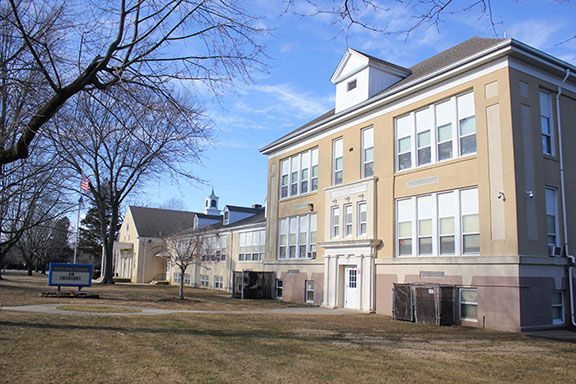OCEANPORT – Professionals say it could cost borough taxpayers more than $40 million and several years to transform two aging neighborhood schools into modern learning facilities.
Nearly 40 residents gathered at the March 27 Oceanport Board of Education meeting were presented with two potential options by Solutions Architecture of Verona.
The first option is to completely demolish Wolf Hill School and construct a new facility in its place, while making targeted investments and upgrades to Maple Place School. It was estimated to cost nearly $42.5 million.
A second option is to renovate and expand Wolf Hill and Maple Place Schools for approximately $29 million.
“This is the most thorough look we’ve ever had into any type of a project we could potentially do with our schools,” said Melanie Lipinski, Oceanport’s acting superintendent and Wolf Hill principal. “Now we need to work together as a community to give our students the modern learning environments they deserve.”
Over the past four years the Oceanport Board of Education has investigated different measures to create more modern schooling facilities, including one proposal to relocate local students to a newly constructed campus at the former Commvault building on Crescent Place.
This particular project would have cost $30 million, but was scrapped at the Feb. 21, 2018 school board meeting following public outcry.
Oceanport Mayor Jay Coffey said the cost of these project proposals may be daunting, but the time has come to invest in the education of borough students.

Photo by Chris Rotolo
“This is what happens when the choice is continually made to ‘wait until next year.’ And it’s not just Oceanport. These decisions are made all over the place. It catches up with you, because the price tag keeps going up. In at least a portion of the Wolf Hill building, we’re at a point where we ran out of road a long time ago and the can has nowhere left to be kicked,” Coffey said in a March 5 interview.
The Wolf Hill Elementary School facility, for pre-K through fourth grade students, is 108 years old. Maple Place School, housing grades five through eight, opened its doors in 1966. Public school students go on to attend Shore Regional High School in West Long Branch.
Both Oceanport school buildings lack fire-prevention sprinkler systems, as well as intruder protective entrances recommended by the Department of Homeland Security. Some ADA-compliant features are also missing, providing limited security and accessibility to students.
Solutions Architecture principal Frank A. Messineo presented a conceptual site plan showing what a renovated and upgraded Wolf Hill School could look like, including an addition to the rear of the building that would house a new kitchen and cafeteria, while converting those current sites into modernized learning spaces.
Messineo said the impact this addition would have on classroom space is twofold, as the added floor space would provide a sound base for future upward expansion, should the board need to add more learning areas on a second floor down the line.
The cost of renovating and adding to the Wolf Hill footprint was estimated to be about $18 million, with Maple Place upgrades, including a second floor expansion, expected to cost about $11 million.
Messineo said the borough could be eligible for about $7.8 million in debt service aid, which could potentially drop the total cost of this option to about $21 million.
Should the borough choose to build a brand new Wolf Hill building, Messineo estimated the debt service aid to be about $3 million, which could potentially drop the total cost to about $39 million.
Lapinksi and the board were in agreement that a new facility may not be the best option for Oceanport taxpayers and Messineo agreed.
“The original reports we saw talked about the buildings being beyond their useful life. I’ve been doing this for 25 years and I’ve never heard that about a building,” Messineo said. “The older buildings, the fact is they’re built better than the new ones. It’s all about how we deal with the bones of these buildings. These buildings have great bones. And I caution you about completely discarding them.”
Messineo added that either option could take two to three years to complete, as a contracted developer would only have unfettered access to buildings and grounds in the summer. Progress would be slower with students and faculty on hand during the school year.
Maintaining an uninterrupted day-to-day learning environment could also be a challenge.
“I’m not going to tell you there’s not going to be any impact (on the learning environment). It’s impossible to avoid when you do a project like this,” Messineo said. “But we would certainly put together a plan that phases the work over time to ensure that it minimally impacts the students and operations.”
The board will reconvene with more questions about the project at its March 13 meeting.














